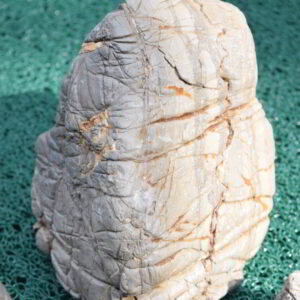Aquascape
Elephant Skin Stones
Elephant Skin Stones
Couldn't load pickup availability
Elephant Skin Stones
Rugged, Textured Beauty for Dramatic Aquascapes!
Elephant Skin Stones bring a unique, weathered aesthetic to your aquarium with their distinctive grey, wrinkled texture resembling aged elephant hide. Formed by centuries of erosion, these limestone rocks add natural drama to planted layouts, offering visual depth and functionality for freshwater tanks, paludariums, and terrariums.
Key Features:
-
Weathered Limestone: Unique “elephant skin” texture with deep wrinkles and random craters, sculpted by natural erosion.
-
Light-to-Dark Grey Palette: Subtle layering with whitish highlights for striking visual contrast in aquascapes.
-
Aquarium-Safe with Gentle Buffering: Slightly raises pH, GH, and KH, benefiting hard-water species like shrimp and snails.
-
Porous Micro-Crevices: Ideal for anchoring mosses, Riccardia, and small epiphytic ferns, promoting lush growth.
-
Irregular Shapes: Stackable 5–15 cm pieces (0.3–1 kg) for creating caves, cliffs, or ridges.
-
Pre-Washed: Minimal dust, requiring only a quick rinse before use.
Why Choose Elephant Skin Stones?
These stones stand out with their signature wrinkled surface, offering a rugged contrast to smoother rocks. Their natural calcium release supports shrimp and snail shell health, while dimples and cracks provide perfect footholds for plants, creating vibrant, river-bed or highland stream-inspired layouts.
Usage Tip:
Place Elephant Skin Stones first as the foundation, then fill gaps with smaller lava or dragon stone chips to lock formations and add intricate micro-detail to your aquascape.
Specifications:
-
Material: Weathered limestone (calcareous rock)
-
Color Range: Light grey to charcoal with whitish highlights
-
Typical Size: 5–15 cm (2–6 in), 0.3–1 kg per piece
-
Density: ~1.9 g/cm³
-
Influence on Water: May slightly raise pH, GH, KH
-
Compatibility: Freshwater, paludarium, terrarium
Note: Rinse thoroughly before use to remove residual dust. Avoid boiling or using detergents to preserve the stone’s texture. Test water parameters regularly if keeping soft-water species (e.g., certain tetras or discus) to monitor GH/KH changes.
Share


